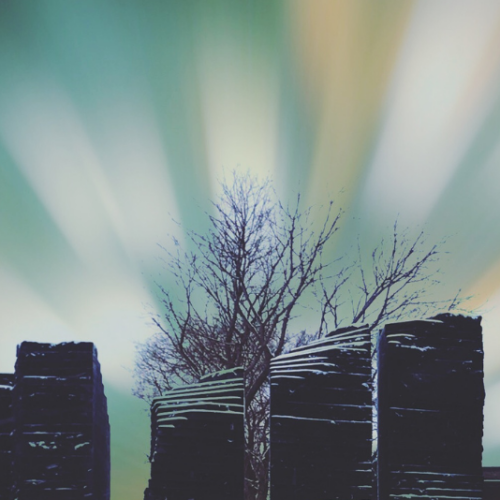The Marble Collectors Society of America explains, “There are many mineral spheres available. Most of these are not true marbles, but merely minerals in the spherical shape.”
The Truth of Marbles
Grandfather brought home a beaten-up pachinko machine.
Look at these metal spheres, Grandfather said, holding the objects in his hands for my siblings and me to see. These are not marbles. They will never be marbles.
Then, he explained how the machine theoretically worked, how the lights would flash if the machine were not a broken thing. Grandfather had no intention of repairing the device; he wouldn’t even clean it. It was destined to be added to the accumulation of material, his treasure trove of useless artifacts, piled in the farthest reaches of the property where Grandmother hardly went.
My siblings and I fed the pachinko machine its shiny spheres, which could never have been marbles, through an opening at the top and hit the lever. The balls fell through a field of pins, eventually spilling out the bottom. Always spilling out, rolling away from the device because the trap at the base was missing. After an hour or so, we grew bored with a machine that did not light up and refused to be full, only holding things temporarily. Grandfather moved his broken pachinko machine a day later. I never saw it again.
Grandmother showed me pearls, once part of a necklace. These, she said, are not marbles.
Grandmother showed me bubbles. These, she said, are not marbles either, and then poked them out of existence.
Grandmother showed me something else that was round.
What’s that? I asked.
A rock, said Grandmother, or something like a rock. A mineral. A meteorite. An island, or part of one. I’m not sure. All I can say is it isn’t a marble.
Grandmother and Marbles
My parents divorced when I was eight. My siblings and I switched schools that year, ending up somewhere deep in almond orchards, farther from Grandmother and her house that held the broken pachinko machine no one ever saw or played with.
We no longer went to Grandmother’s house first thing in the morning, where my parents used to deposit us before setting off on their long commutes. Grandmother was always prepared for our arrival, having already laid out a large blue blanket in her living room so we could catch a few more minutes of sleep. Grandmother had beds for us to sleep in, but we fell into the blanket on the floor without a thought. The blue blanket was heavy, with a black pattern, some sort of flower print. There were peaks and troughs where the blanket creased, the slight folds where the flower print became abstract, not at all a flower.
During the first year of my parents’ separation, before we moved, my siblings and I found a bag of marbles buried in one of Grandmother’s dresser drawers. She gave us the bag after making us promise to share and confirming the spheres were indeed marbles. Truly, they were.
At school, we played with/against other children. Always for keeps, returning to Grandmother’s house with different marbles each day, none of which had originally belonged to her.
Did Grandmother know we had lost marbles, gained new ones, lost those, retrieved the originals, lost those again? We came back with new marbles, different marbles, something awfully like marbles, but not. We brought more. Less.
My siblings and I slipped up and told Grandmother about our playground dealings, or she noticed the change. Either way, Grandmother seemed upset. We weren’t sure why. Wasn’t this what marbles were meant for?
Back then, I asked Grandmother if she remembered where she got the marbles, the ones she initially gave us before we won and lost a world of them.
She said she couldn’t remember.
I then asked Grandmother what marbles meant to her. If they were important.
She changed the subject, asked if we wanted lunch. We all nodded and Grandmother went inside to make us sandwiches and omelets, leaving us to play marbles.
Snakes and Bubbles
During the days of marbles, my third-grade teacher gave us an assignment. We were to create a pop-up book. School was difficult for me, each year a new challenge, another possibility I would stay behind while my twin brother moved on, moved up; and I would be nothing, like a pachinko ball in a broken machine, because I would not move at all.
My mother was patient with me. What is this? she would ask in a wondering tone, looking over my writing. As if she had been awarded the rare opportunity to translate a work by conversing with the writer himself.
Then I would have to reveal something to her. What was what. But my words—imitations of shapes and not true words—became as mysterious to me as to her, so unfamiliar that I would have to give a vague summary of the story I had envisioned, already distant from the original. When I finished my retelling, she would look back at the symbols I had left on the paper, trying to decipher the puzzle.
I would walk away, exhale, and think of Grandmother. How she would show me her herb garden and sigh, give a wave to the surrounding area with its mounds of disturbed dirt, say only, el topo. We would move on to the flowers and she would perform the same act: sigh, wave, el topo. We would move on to the onions…
*
A few days ago, I went to see Grandmother. After catching up, hearing about her friends, the recent activities at the historical museum, the upcoming parade, traffic, back pain, and how one or two of her fingers will no longer bend, I mentioned I was writing a book.
She asked if the book was about her topo. I said, No. Then I told Grandmother how much I had written about her in the book, but she wasn’t listening. She had become distracted by something. She got up, walked over to a hose, and began watering her plants. I stayed where I was, waiting for her to finish.
What was the story I had written for school all those years ago? It was about snakes. Snakes in bubbles. Who knows how they got embedded in that spherical shape. They looked content though.
As Grandmother watered her thirsty plants, I heard laughter next door. Children were shouting with the absolute glee that accompanies bubbles. Before I knew it, bubbles were floating into Grandmother’s yard. Some burst in midair; others burst after landing.
When Grandmother returned to where I sat, she asked what we had been talking about.
Nothing, I replied, watching one final bubble land gently on the grass, waiting for it to rupture.
In several months, Grandmother will leave this house; something will burst.
Bursting Bubbles
In The Terror of Evidence, German philosopher Marcus Steinweg writes, “In the bursting of soap bubbles, our dreams burst, our hopes, illusions—this is, our reality. It would be naive to believe that our realities aren’t soap bubbles.”
Reality is a bubbly liquid, a foaming sea rocking islands to sleep.
In a burst: my reality, my imaginings of marbles, spherical shapes, broken machines, Grandmother’s house—all are gone.
Somewhere else, another bubble forms, catches the light, gives off a soapy shimmer.
Marble Solitaire
The Marble Collectors Society of America’s statement on marbles and minerals in the spherical shape ends:
Some marble collectors add [mineral spheres] to their collections because they display well. However, most of these were never intended to be used to play the game of marbles, although some were produced to be used in solitaire-type games.
Grandmother is leaving soon. Her house is emptying out a little more each day. There is not much to display. Not a sphere of any kind. The distinction between spherical objects made finally unnecessary.
I ask Grandmother where the pachinko machine might be. She says she doesn’t know.
Pachinko balls collide with pins, marbles collide with other marbles, as grandmother would collide with topos on her property in a continuous game of cat and mouse; but in the game of marble solitaire, there’s no such thing as collision. Each spherical object occupies a space made to fit a spherical object. An open space at the center allows a lone player to move the spheres neatly, concisely over one another, as in a game of checkers. The player attempts to clear the board, a marble, or something like it, jumping over another and on and on until the end. What if there are pieces remaining but no more moves to make? Then the game is done. The player has lost, will have to try again, solitarily.
*
I take a lone marble. It is a true marble, swirled green and white, with chips along its surface. Does it belong to Grandmother? I can’t say. I take it outside while she walks through her house one last time.
I go to the farthest corner of her property, where I believe the pachinko machine and its balls disappeared all those years ago, and bury the marble.
Then Grandmother is calling, saying she is ready to go.
I move toward the house, and somewhere a bubble bursts.
I think of marbles and other things of a spherical shape that are disappearing.




